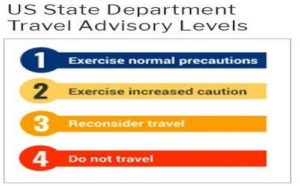
By Pam Martens and Russ Martens:
New York Community Bancorp’s tumultuous share price descent began on January 31 when the bank filed an 8K form with the SEC indicating a $260 million net income loss in the fourth quarter; a dividend cut from 17 cents to 5 cents; and a $552 million provision for credit losses on commercial real estate. (Year-to-date, the company’s share price has lost 73 percent of its market value. Yesterday, its shares closed at $2.73, down 23 percent from the prior trading session on Friday, when the shares had lost 26 percent. )
Somehow, JPMorgan banking analyst Steven Alexopoulos was able to swat the gargantuan warning signs of January 31 away like a pesky gnat on an otherwise perfect day. On February 1, Alexopoulos penned a missive recommending that investors “take advantage of this valuation and accumulate shares on this weakness.” To drive home his strong buy recommendation, he wrote: “Not only do we maintain our Overweight rating, but NYCB remains our top pick for 2024.”
JPMorgan’s bank analyst call on NYCB is turning out to be another embarrassing black mark at JPMorgan Chase, a bank that seems to have enshrined scandals and felony charges as an integral part of its mega bank business model.
JPMorgan’s strong buy rating on New York Community Bancorp came a mere 34 days ago. Here’s what has happened since then:
On February 6, Moody’s downgraded the bank’s credit rating to junk. Moody’s also warned that a third of the bank’s deposits lack FDIC insurance.
On February 29, NYCB made new filings with the SEC, this time announcing that its President and CEO, Thomas R. Cangemi, was being replaced by the Executive Chairman of the Board, Alessandro (Sandro) DiNello. In a separate filing, NYCB announced alarming “material weaknesses,” writing as follows:
“…as part of management’s assessment of the Company’s internal controls, management identified material weaknesses in the Company’s internal controls related to internal loan review, resulting from ineffective oversight, risk assessment and monitoring activities. Although assessment of the Company’s internal controls is not yet complete, the Company expects to disclose in the 2023 Form 10-K that its disclosure controls and procedures and internal control over financial reporting were not effective as of December 31, 2023. The Company’s remediation plan with respect to such material weaknesses is expected to be described in the 2023 Form 10-K.”
“Material weaknesses” are two words that credit rating agencies never want to read in a deposit-taking bank’s filings with the Securities and Exchange Commission. After markets closed last Friday, Moody’s cut the deposit rating on NYCB’s commercial bank by four notches, moving it deep into junk territory.
That can’t have gone over well with the folks holding large amounts of uninsured deposits at the bank. (The Federal Deposit Insurance Corporation (FDIC) insures commercial bank accounts up to $250,000 per depositor, per bank. Corporations and institutions frequently hold sums much greater than that at commercial banks.)
On March 28 of last year, the Chair of the FDIC, Martin Gruenberg, delivered a report to the Senate Banking Committee on why Silicon Valley Bank and Signature Bank had failed last year. Among numerous problems, he noted the following:
“In the immediate aftermath of the failure of SVB [Silicon Valley Bank] and Signature Bank, some preliminary lessons can be identified. A common thread between the failure of SVB and the failure of Signature Bank was the banks’ heavy reliance on uninsured deposits. As of December 31, 2022, Signature Bank reported that approximately 90 percent of its deposits were uninsured, and SVB reported that 88 percent of its deposits were uninsured. The significant proportion of uninsured deposit balances exacerbated deposit run vulnerabilities and made both banks susceptible to contagion effects from the quickly evolving financial developments. One clear takeaway from recent events is that heavy reliance on uninsured deposits creates liquidity risks that are extremely difficult to manage, particularly in today’s environment where money can flow out of institutions with incredible speed in response to news amplified through social media channels.”
Yesterday, we wrote about the insightful investigation by financial watchdog, Better Markets, into how New York Community Bancorp ended up in such a mess. Better Markets’ researchers found the following:
“In late 2022 and early 2023, the federal banking regulators inexplicably approved not one, but two, mergers for NYC Bancorp in rapid succession. First, in December 2022, Flagstar was acquired by NYC Bancorp and at the same time Flagstar acquired [New York Community Bank]. Then, only about 100 days later, Flagstar was selected as the winning bidder by the FDIC to acquire the failed Signature Bank (‘Signature’). A bank acquiring and integrating any one of these transactions in isolation would be challenging under the best of circumstances, it is inexplicable that the banking regulators allowed them in tandem under extremely stressed conditions.”
And this:
“…over the course of just two quarters, Flagstar’s two acquisitions quadrupled its asset size, from $25 billion on September 30, 2022, to $123 billion on March 31, 2023. It also more than doubled its employee count, from about 2,800 in September 2022 to 6,800 in March 2023.”

We really appreciate your help. Maintaining the websites and live streaming videos requires a substantial financial commitment. Any amount contribution is much appreciated. Please think about contributing a reasonable amount on a monthly basis.
Please Give Please Give You can also send a check to PO Box 127, Pontotoc, TX 76869.
The HIMEDIA Group. Join the cause. Donate now.





